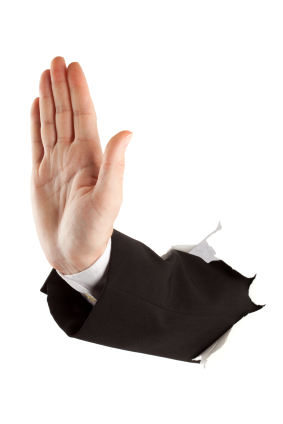In complex commercial litigation today, virtually all discovery involves electronic discovery to some extent. It also is well known that absent affirmative steps to preserve it, at least some electronically stored information (“ESI”) is likely to be lost during the course of litigation through routine business practices or otherwise. These realities counsel strongly in favor of early and, if necessary, frequent communications among counsel for opposing litigants to determine how discovery of ESI will be handled.
Vice Chancellor Parsons, Court of Chancery of Delaware, Beard Research, Inc. v. Kates, 2009 Del. Ch. LEXIS 94, 21-22 (Del. Ch. May 29, 2009).
An employer sued a former employee (and other two employers) for spoliation of evidence out of a failure to preserve a hard drive. Beard Research, Inc. v. Kates, 2009 Del. Ch. LEXIS 94, 1-2 (Del. Ch. May 29, 2009). The opinion is a great case study on the different standards to sanction a party for negligence to recklessness to willful destruction of evidence.
Case Timeline & Relevant Facts
At issue was the laptop of one of the Defendants. Here is the basic timeline of events:
 May 4, 2005: Plaintiffs file complaint. Beard Research Inc., 6-8.
May 4, 2005: Plaintiffs file complaint. Beard Research Inc., 6-8.
June 21, 2005: First discovery requests for electronically stored information. Id.
October 31, 2005: Defendant is laid off from the Co-Defendant 1. Defendant deleted all Co-Defendant 1’s data from his hard drive. Id.
December 2005: Hard drive crash. Defendant reformatted hard drive. Id.
December 2005-August 2006: Second hard drive failure and reformatting. Id.
The Defendant admitted he understood that reformatting the hard drive could “wipe out the old data.” Id.
August 2006: Defendant began working for Co-Defendant 2. Id.
Sometime in 2007: Third hard drive failure. Beard Research Inc., 10.
The Evidence at Issue
The evidence at issue on the Defendant’s hard drive was 1) purported email messages 2) a PowerPoint presentation given to one of the Co-Defendants to show “what he could bring to the table.” Beard Research Inc., 5-6.
The CEO of Co-Defendant 2 asked point blank during the PowerPoint presentation:
If you’re bringing a catalog of compounds with you or you want to build another one, is there going to be any type of conflict IP [intellectual property]? Are we going to have any issues surrounding this set of compounds? Because you’re coming from another company that also offers this component as far as their business model. . . . I don’t need any issues. Beard Research Inc., 6.
A Chain of Errors: A Botched Litigation Hold
The Court did not use the term “litigation hold,” but noted the fact that the lawyers for the Defendant and Co-Defendants “apparently did nothing to notify those Defendants and their employees of the need for care in terms of preserving relevant ESI once litigation had been instituted.” Beard Research Inc., 23.
The Court stated that the Defendant and Co-Defendants should have known that the Defendant’s laptop might have had relevant information, because they were small companies and the Defendant’s status in the different companies. Beard Research Inc., 23.
The Court stated:
The complete absence of any evidence that Defendants ASDI, ASG, or Kates took any action to satisfy their obligation to preserve relevant information on Kates’s laptop in 2005 leads me to conclude that ASDI and ASG bear some responsibility for the destruction of evidence that occurred in November 2005, albeit much less than Kates himself. Beard Research Inc., 23-24.
The Court’s Findings: Duty to Preserve
The Court held the defendants all breached their duty to preserve evidence. Beard Research Inc., 25-26. The Defendant himself was responsible for the hard drive loss.
The parties effectively did nothing to preserve the hard drive, other then one of the attorneys telling the Defendant to, “not trash the laptop.” Beard Research Inc., 25-26.
Making things worse for the Co-Defendants, they had an e-discovery consultant who at a minimum could have been asked to preserve the hard drive or that it was important to preserve relevant ESI on the laptop. Beard Research Inc., 26.
Don’t Tell the Court “You Can’t”
 The Co-Defendants took the position the Court lacked any power to sanction the Defendants, because the hard drive was lost before the Court issued an order to produce it. Beard Research Inc., 30.
The Co-Defendants took the position the Court lacked any power to sanction the Defendants, because the hard drive was lost before the Court issued an order to produce it. Beard Research Inc., 30.
That argument crashed and burned.
The Court was in no mood to give a free pass for “self-inflected” destruction of evidence. Moreover, the only reason the hard drive was lost was because of the Defendants actions (or lack thereof). Beard Research Inc., 30. Making things worse, the Plaintiffs and their expert searched the hard drive that had been produced to them, without knowing it was actually a new hard drive that lacked relevant ESI. Id.
Default Judgment Standards
A default judgment is justified where a party acted “willfully or in bad faith and intended to prevent the other side from examining the evidence.” Beard Research Inc., 31.
The Court found a default judgment was an extreme sanction. Beard Research Inc., 31. There was no evidence that the Defendants and Co-Defendants acted willfully or in bad faith. Beard Research Inc., 32. Additionally, the Plaintiffs did not show that the lost hard drive would have likely included any incriminating emails. Id.
Adverse Inference Standard
The Delaware Supreme Court stated that an adverse instruction is warranted “where a litigant intentionally or recklessly destroys evidence, when it knows that the item in question is relevant to a legal dispute or it was otherwise under a legal duty to preserve the item.” Beard Research Inc., 33, citing Sears, Rosebuck & Co. v. Midcap, 893 A.2d 542, 552 (Del. 2006).
The key for a judge to issue to adverse inference instruction is finding intentional or reckless destruction of evidence. Id.
After defining recklessness as “a conscious indifference to the rights of others,” the Court articulated the following standard for issuing an adverse inference instruction:
[A]n adverse inference is appropriate when an actor is under a duty to preserve evidence and takes part in the destruction of evidence while being consciously aware of a risk that he or she will cause or allow evidence to be spoiled by action or inaction and that risk would be deemed substantial and unjustifiable by a reasonable person. Beard Research Inc., 35 and 37.
The Court found the Defendant acted reckless when he had been laid off and began deleting ESI off his computer, replacing his hard drive and for not making a reasonable effort to preserve the original hard drive. Beard Research Inc., 37.
 The Court’s analysis in issuing an adverse inference instruction took a “What did the President know and when did he know it” theme. The Defendant admitted he knew reformatting a hard drive could delete data. Moreover, he intentionally deleted data after he was laid off. Beard Research Inc., 38-39. After being told by an attorney not to destroy his laptop, the Defendant had his hard drive replaced. Id.
The Court’s analysis in issuing an adverse inference instruction took a “What did the President know and when did he know it” theme. The Defendant admitted he knew reformatting a hard drive could delete data. Moreover, he intentionally deleted data after he was laid off. Beard Research Inc., 38-39. After being told by an attorney not to destroy his laptop, the Defendant had his hard drive replaced. Id.
The Court found the Defendant 1) Knew he had a duty to preserve the laptop and 2) disregarded his duty to preserve. Beard Research Inc., 39.
The Court ordered an adverse inference instruction because of the Defendant’s conduct that resulted in the loss of the original hard drive. Beard Research Inc., 39.
Now What? What Adverse Inference to Draw?
The Plaintiffs claimed the lost hard drive had both email messages and a PowerPoint presentation.
The Plaintiffs had a big challenge with the email messages: There was no direct evidence the email messages ever existed. Beard Research Inc., 39. An adverse inference is not substantive proof of facts to prove a case in chief. Beard Research Inc., 39. The Court further stated:
“To obtain an adverse inference, however, a party must offer more than mere speculation and conjecture that a particular document existed.” Beard Research Inc., 39.
The other obstacle the Plaintiffs failed to overcome was that an email message has both a “To” and a “From.” The discovery from the Co-Defendants did not contain any evidence of other messages from the Defendant that had not already been produced. Beard Research Inc., 40.
Now the PowerPoint Presentation on the Other Hand…
The Defendant gave a presentation using PowerPoint to one of the co-defendants. This was not disputed. Beard Research Inc., 40-41. There was also the added fact there were witnesses to the presentation.
The presentation may have overlapped with the services between the Plaintiffs and co-defendants. The Court found the Plaintiffs were entitled to an adverse inference that the presentation included a “replicate” of their catalog. Beard Research Inc., 41.
Negligence Enough for Attorney’s Fees
The Judge was not happy. Things do not end well for a party when a judge says the Court has been “sandbagged” or call a party out for “vexatiousness” conduct. Beard Research Inc., 42-43.
A party can be sanctioned monetarily by showing the duty to preserve evidence was breached. Beard Research Inc., 42. Given the Defendant’s actions and destruction of evidence, the Court quickly ordered the defendants pay the attorneys’ fees, expenses and expert fees. Beard Research Inc., 42.
